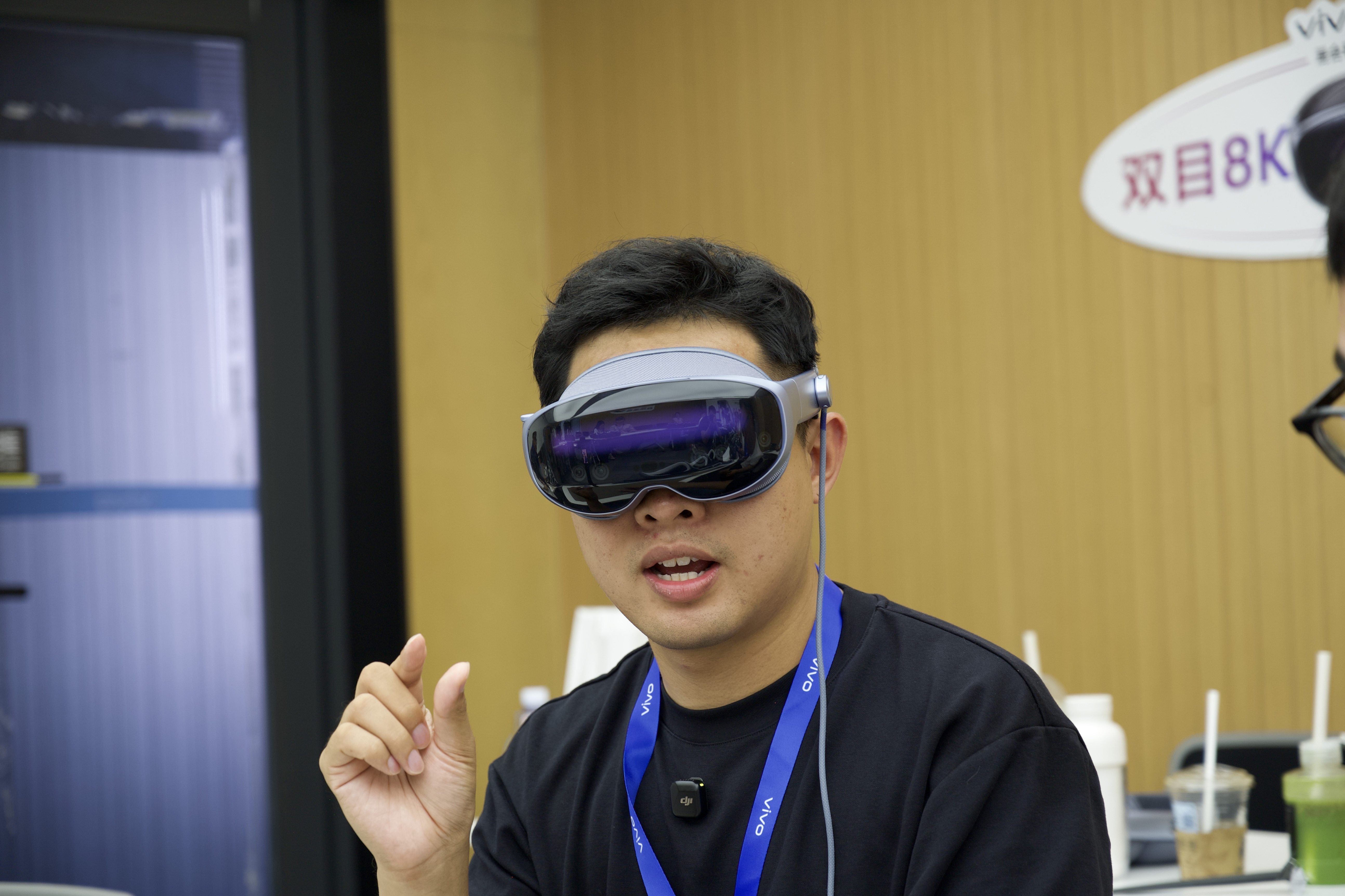 |
Technology company Vivo has just announced the Vision Discovery Edition glasses at an event in China. This is the latest product in the mixed reality (MR) glasses line, a race that is heating up with many strong competitors such as Apple Vision Pro, Meta Quest 3S, Samsung Project Moohan (not officially launched yet). |
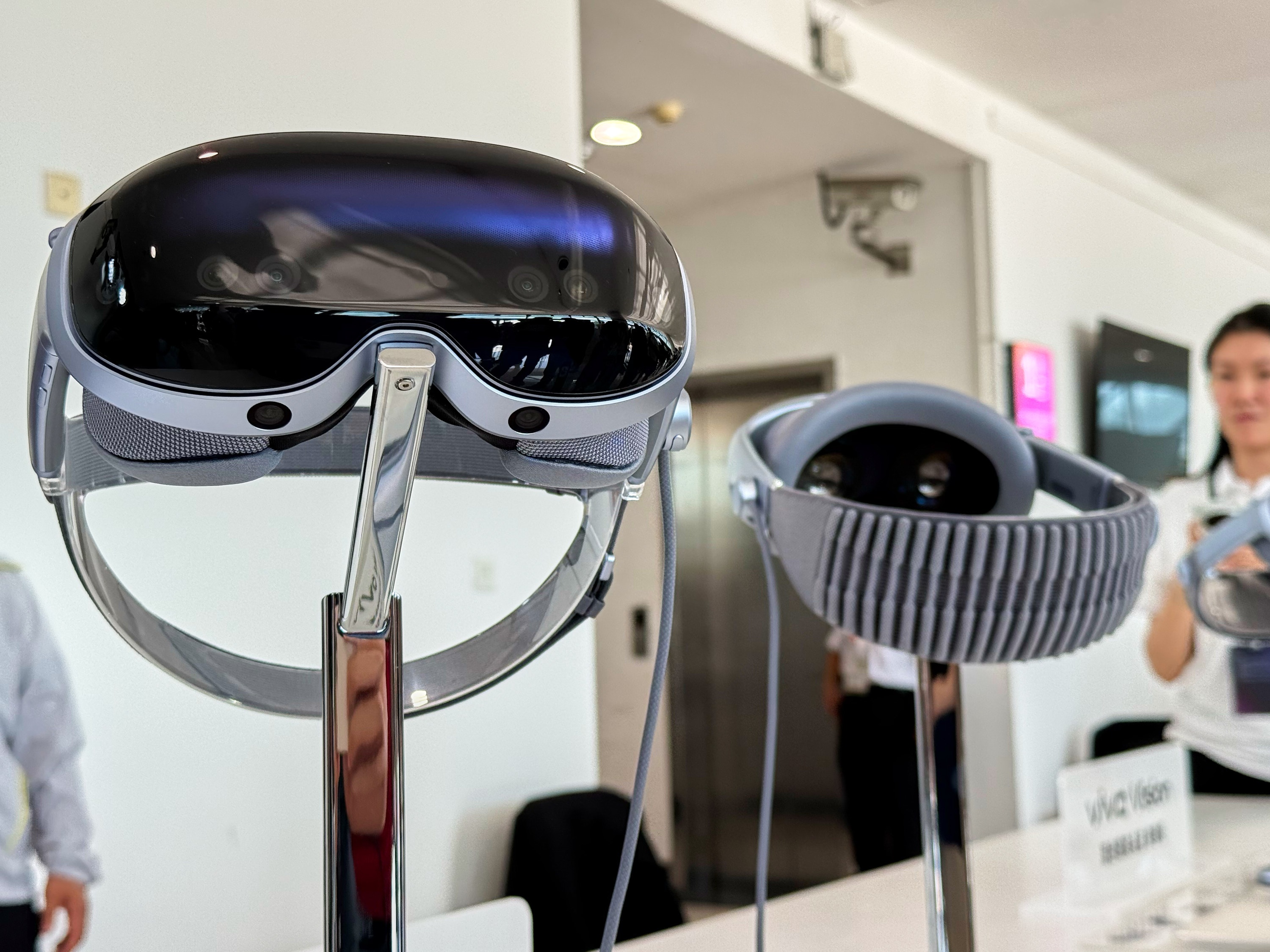 |
The Vivo Vision's appearance has many features that can immediately remind people of the design of the Apple Vision Pro. Vivo's product also has a rigid frame that goes close to the ears, an option for elastic straps (pictured) or adjustable straps, a removable battery, and eye and hand gesture control instead of a separate handle. |
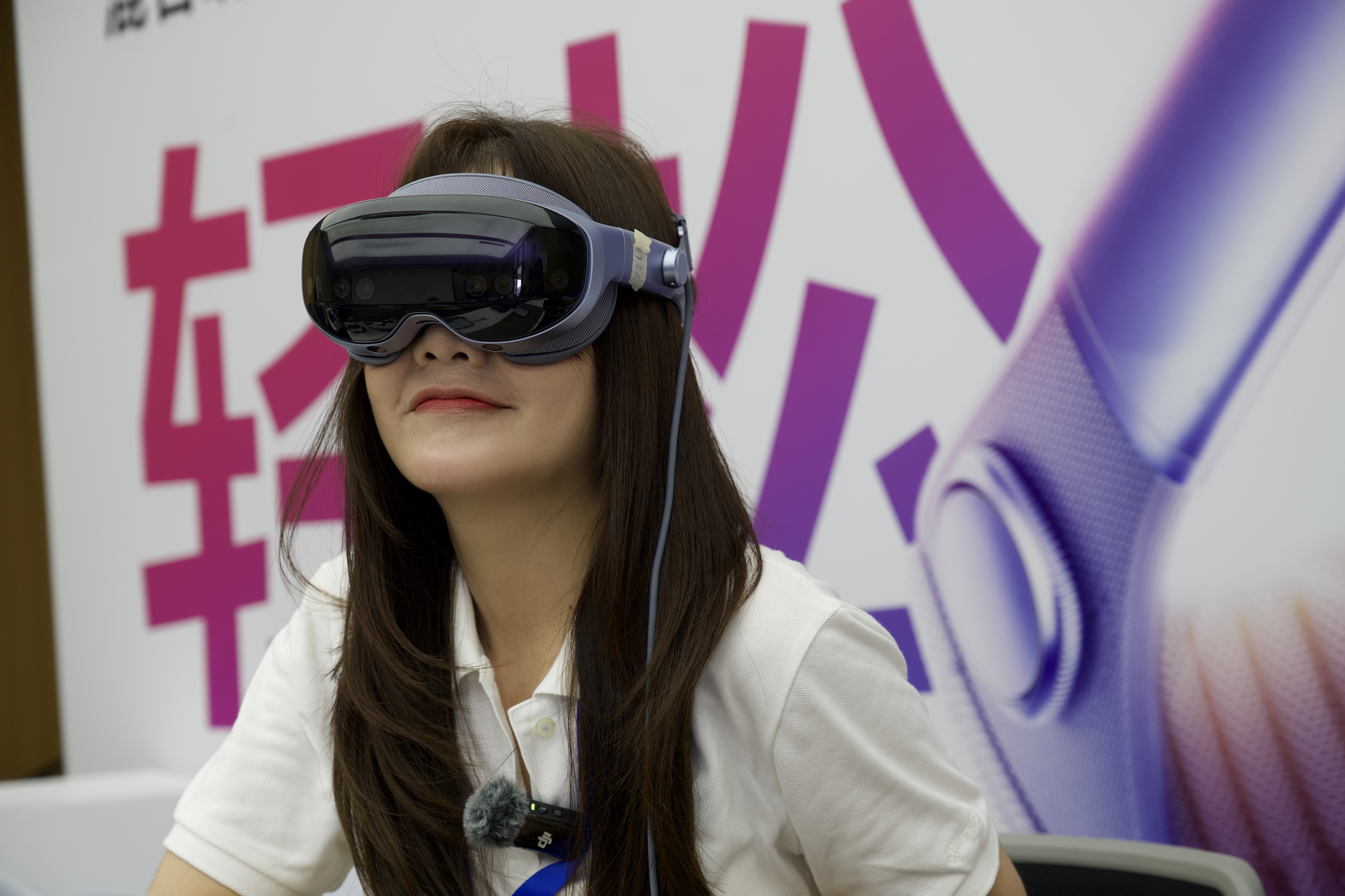 |
However, Vivo's MR glasses are much lighter, weighing only 398 grams. This is 2/3 of Apple's glasses (600-650 grams depending on the strap), and also much lower than Quest 3 (over 500 grams). At over 8 centimeters tall and 4 centimeters thick, Vivo says the glasses can fit neatly into a woman's handbag. |
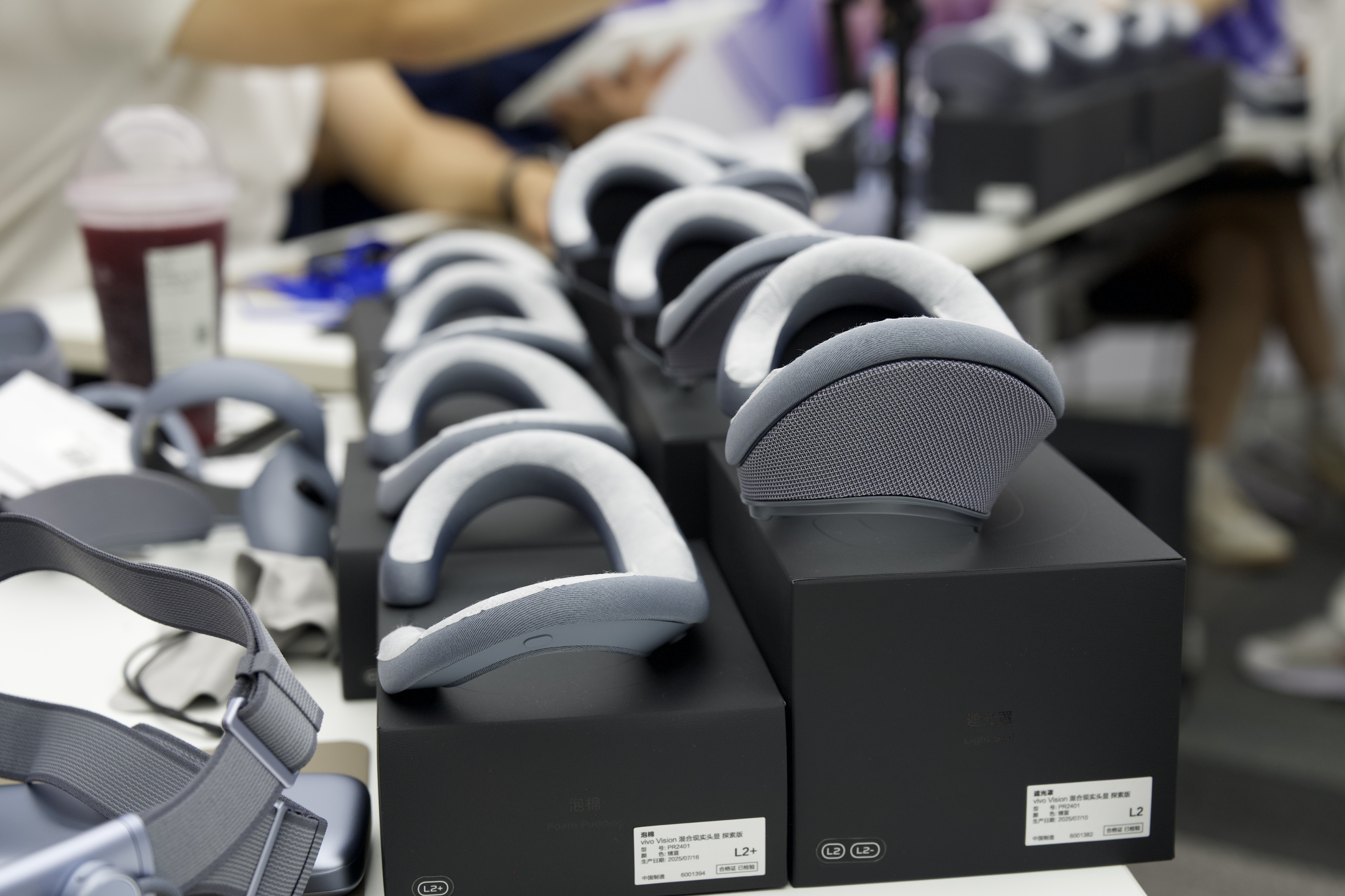 |
After about 15 minutes of experience, Vivo Vision glasses do not cause discomfort when worn, nor do they leave marks around the user's eyes or cheeks. Before first use, users will also use the glasses' front cameras to scan their faces, helping to choose the right pads. |
 |
The company also revealed that the two internal screens use Micro-OLED technology, each with a resolution of 3,840 x 3,552, with good coverage and color accuracy. When worn on the eyes, the glasses create a virtual screen with a size of up to 120 feet (more than 36 m). Another important criterion for smart glasses is the difference in brightness and color between the two eyes, which is pre-calibrated by the company. |
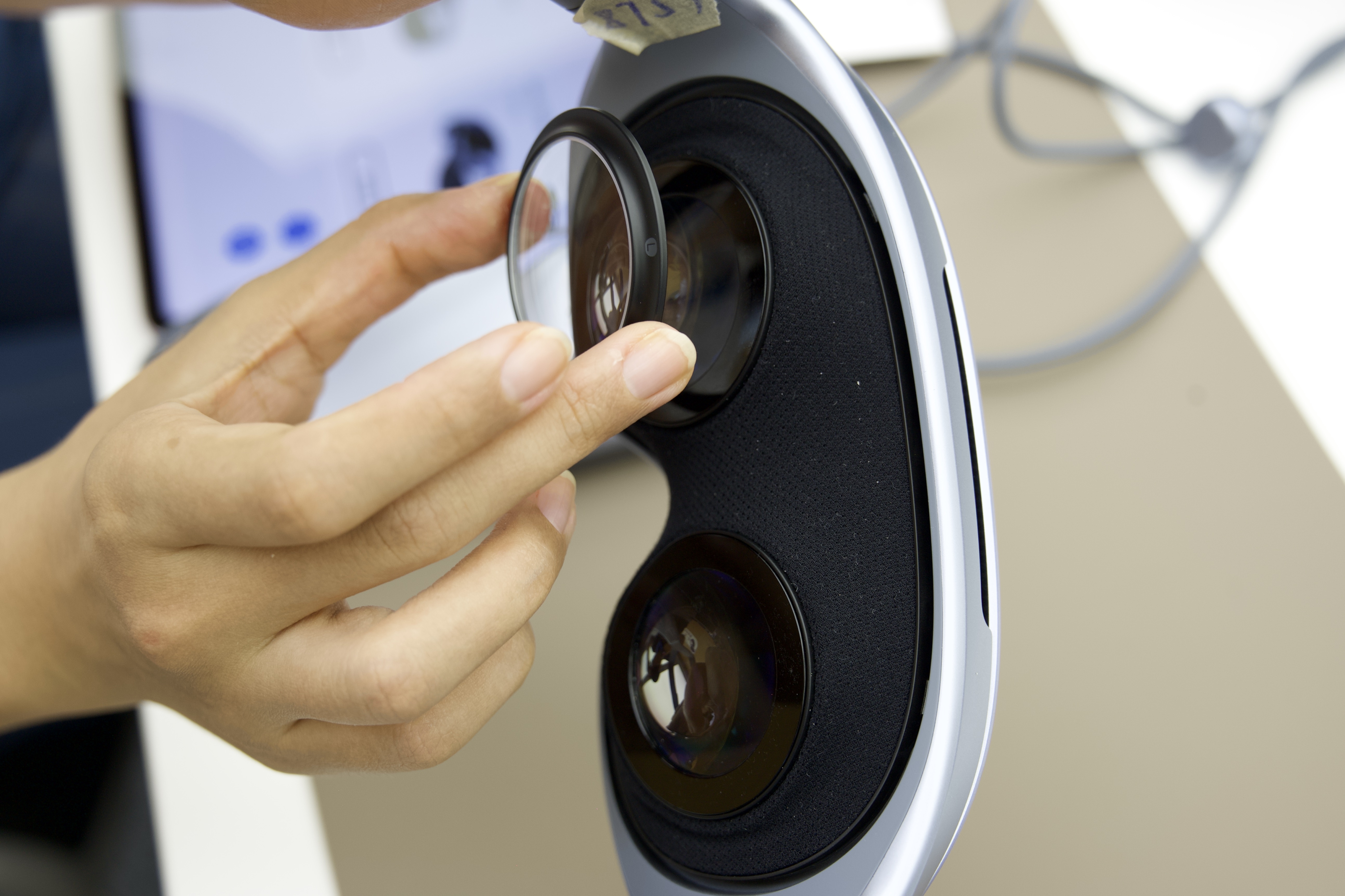 |
For those with myopia, Vivo offers a lens solution with a nearsightedness of 1-10 diopters. Installing nearsighted glasses is also quite simple, just choose the lens that matches your nearsightedness, put it close to the main eye and attach it with a magnet. |
 |
The glasses use the OriginOS Vision operating system, with control by buttons, eyes and gestures. The glasses can track eyes at 1.5 degrees of movement, have 26 levels of finger gesture recognition, and a vertical range of 175 degrees for increased accuracy when experiencing. In real-life experiences, the glasses capture eye movements accurately, but with hand-clicking movements, users may have to sit up straight or hold their hands perpendicular to their faces to ensure correct selection. If the hands are placed on the table in a comfortable sitting position, the device sometimes does not receive the signal. |
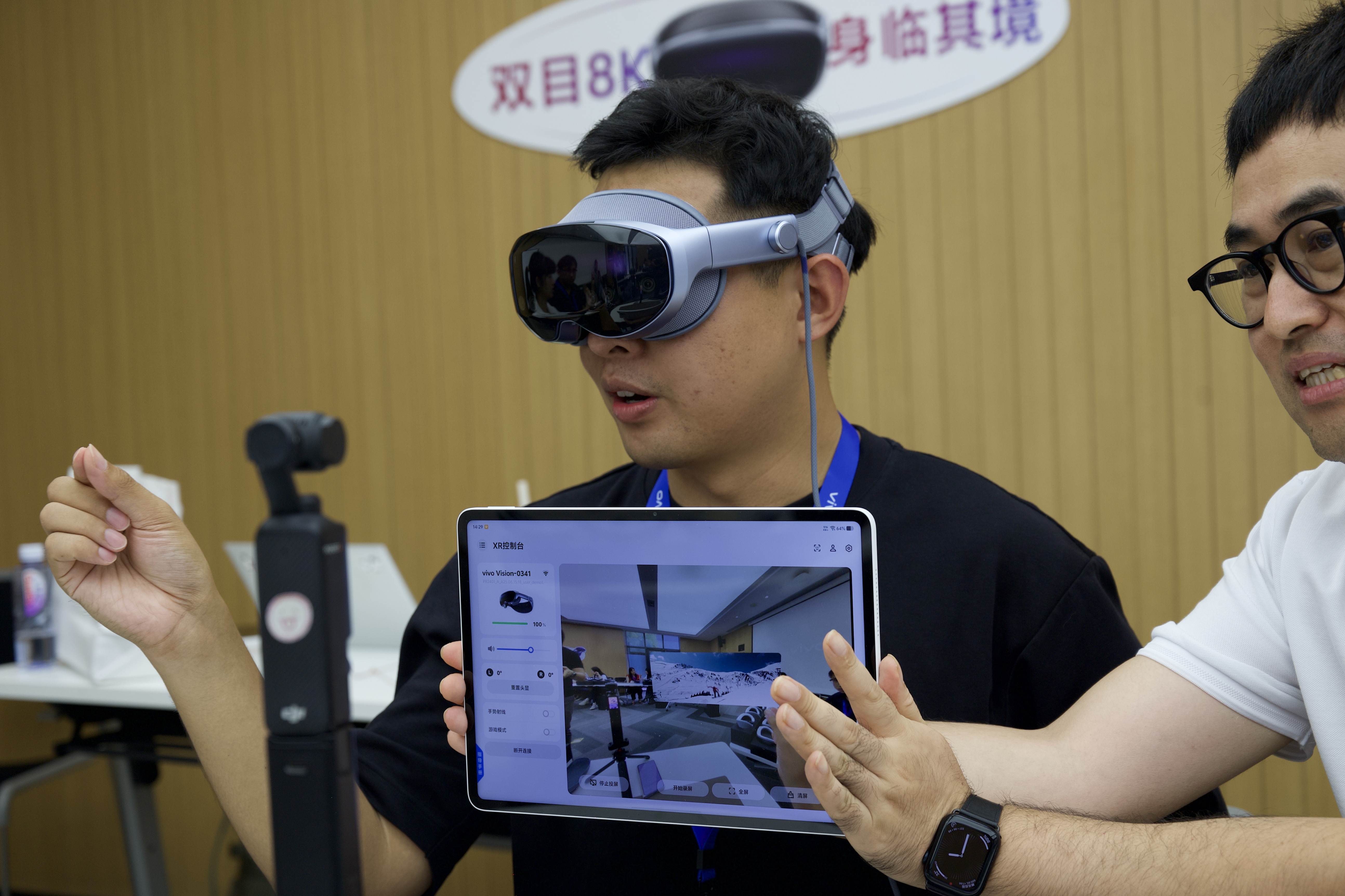 |
For those who have used Apple Vision Pro, getting used to Vivo Vision glasses is quite simple, the interface is also familiar. The device uses Qualcomm's Snapdragon XR2+ Gen 2 chip, which can theoretically meet the most important tasks of MR glasses such as watching movies, photos, 8K videos . Currently, Vivo is only in the early stages of ecosystem development, so there are not many content and partners making applications and services. |
 |
According to the company's published specifications, the included battery has a capacity of 5,000 mAh. Vivo has not disclosed the battery life of this model, even in the form of an estimate at the launch event. Apple's glasses have a battery life of 2-2.5 hours. |
 |
Vivo says it is working with multiple content distribution partners, and has yet to finalize an official launch date or price. The company says it will hold user experience programs in China starting in August, with sales expected to begin in the first half of 2026. |
Source: https://znews.vn/kinh-thong-minh-cua-vivo-nang-bang-23-vision-pro-post1579026.html





![[Photo] President Luong Cuong receives Speaker of the New Zealand Parliament Gerry Brownlee](https://vphoto.vietnam.vn/thumb/1200x675/vietnam/resource/IMAGE/2025/8/29/7accfe1f5d85485da58b0a61d35dc10f)




















![[Photo] Hanoi is ready to serve the occasion of the 80th National Day Celebration on September 2nd](https://vphoto.vietnam.vn/thumb/1200x675/vietnam/resource/IMAGE/2025/8/29/c838ac82931a4ab9ba58119b5e2c5ffe)































































Comment (0)